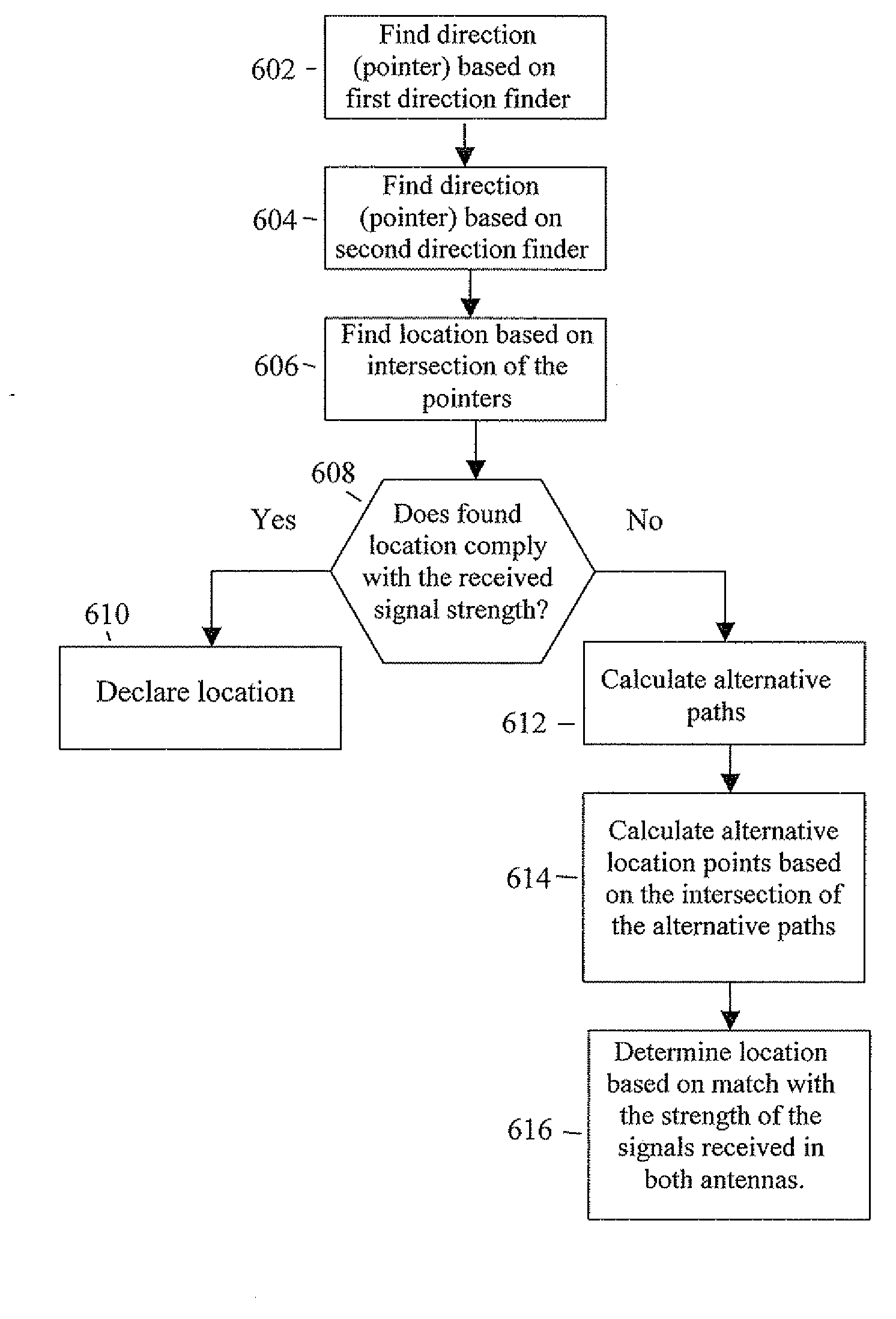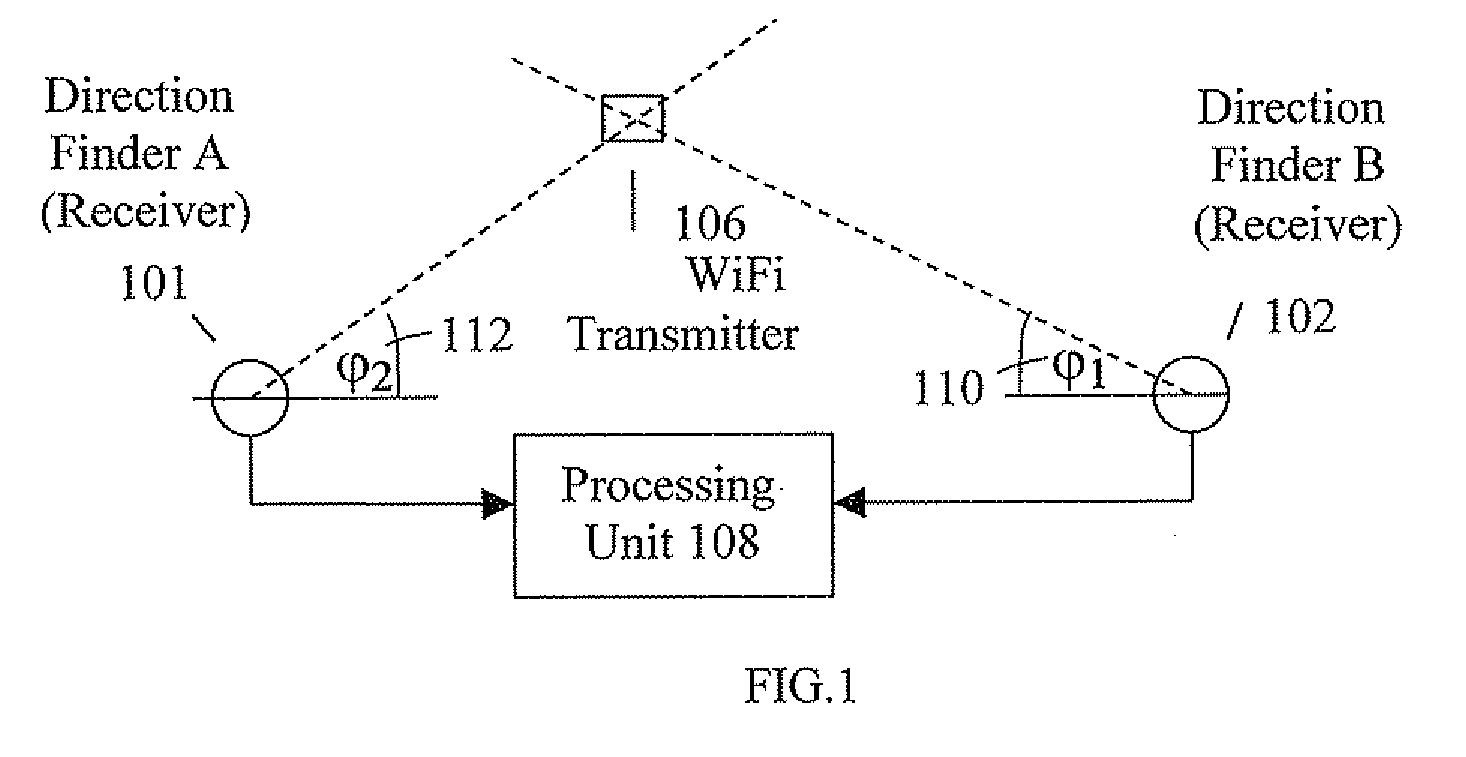Indoor location determination
- Summary
- Abstract
- Description
- Claims
- Application Information
AI Technical Summary
Benefits of technology
Problems solved by technology
Method used
Image
Examples
Embodiment Construction
[0026]FIG. 1 shows an embodiment of an indoor location identification system used in the invention. The system includes a first receiver used as direction finder A 101 and a second direction finder B 102, both being antenna arrays of which principle of operation is explained below. Each direction finder includes at least one array of at least three antennas A, B, C (see FIG. 2) and receives from a transmitter 106 a beam (“pointer”) at an angle (p relative to the line between the two receivers. A processing unit 108 coupled to each direction finder receives from each direction finder the respective φ angle. The tentative location of the transmitter can be found based on angles φ1 and φ2 and prior knowledge of the location of the direction finders 101 and 102 (“triangulation”). However, the basic direction finding based on angle of arrival has almost never been applied to indoor environments, and when applied has not been successful, because of the reflections and other artifacts comm...
PUM
 Login to View More
Login to View More Abstract
Description
Claims
Application Information
 Login to View More
Login to View More - R&D
- Intellectual Property
- Life Sciences
- Materials
- Tech Scout
- Unparalleled Data Quality
- Higher Quality Content
- 60% Fewer Hallucinations
Browse by: Latest US Patents, China's latest patents, Technical Efficacy Thesaurus, Application Domain, Technology Topic, Popular Technical Reports.
© 2025 PatSnap. All rights reserved.Legal|Privacy policy|Modern Slavery Act Transparency Statement|Sitemap|About US| Contact US: help@patsnap.com



